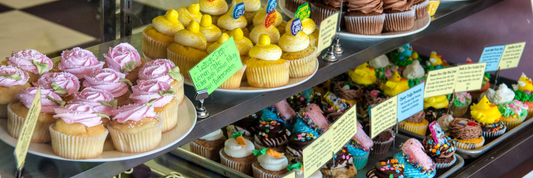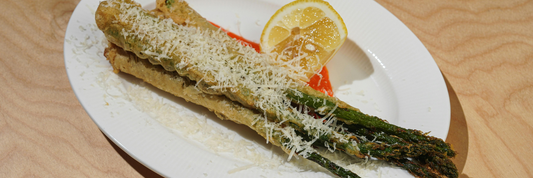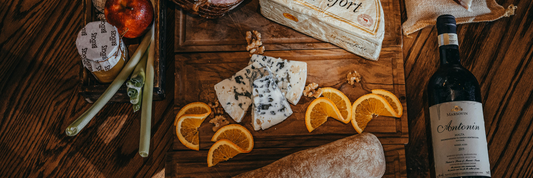Mousse is one of the most delicate and elegant desserts in the world smooth, airy, and often layered with fruits, cream, or chocolate. But no matter how delicious it tastes, its presentation and freshness depend entirely on the right packaging.
The perfect packaging for mousse does more than hold the dessert. It protects texture, maintains temperature, prevents leaks, and enhances your brand image. For dessert businesses in Canada and the USA, choosing suitable mousse packaging means balancing appearance, functionality, cost, and sustainability especially as eco-conscious consumers continue to shape purchasing habits.
This complete guide explores every aspect of mousse packaging, from types and materials to branding and eco-friendly solutions helping bakeries, cafés, and F&B brands make the best choice for both product and planet.
-
Paper vs. Plastic Bakery Boxes: Which is the Better Choice?
-
PET vs Paper: Which Dessert Container is Best for Your Bakery (Canada & USA)
-
Color & Design Trends for Bakery Packaging in 2025
Common Types of Packaging for Mousse

When selecting packaging for mousse, the type of container defines both its functionality and appeal. Here are the most common options:
Plastic Mousse Cups (PET, PP, PS)
Plastic mousse cups are a top choice for single-serve desserts in takeout, catering, or retail.
-
PET mousse cups offer excellent clarity, making them ideal for visually layered desserts like chocolate mousse or tiramisu.
-
PP mousse cups are microwave-safe and flexible, perfect for cold or slightly warm servings.
-
PS mousse cups are rigid and glossy, but more brittle and less eco-friendly.
Most come with snap-on lids, tamper-evident seals, or dome tops for whipped cream.
Glass Mousse Jars
For upscale patisseries, glass mousse jars elevate presentation and brand image. They are reusable, eco-friendly, and compatible with luxury branding. The weight and transparency of glass make it ideal for premium mousse jars or gift sets.
However, glass is more expensive and fragile better suited for dine-in or refrigerated display, rather than delivery.
Paper and Cardboard Mousse Boxes
Paperboard packaging is growing in popularity due to its eco-friendly appeal. These boxes often include:
-
Kraft paper mousse boxes with transparent PLA or PET windows.
-
Triangular cake boxes for mousse cake slices.
-
Multi-cup trays with individual cavities to prevent shifting during transport.
They’re lightweight, customizable, and recyclable — making them ideal for takeaway or wholesale packaging.
Aluminum and Metalized Packaging
For frozen mousse or long shelf-life desserts, aluminum containers provide strong barrier protection against oxygen and moisture. They’re less common in artisanal settings but frequently used in industrial dessert manufacturing.
Materials Used in Mousse Packaging

Understanding materials helps you balance functionality and sustainability.
PET (Polyethylene Terephthalate)
-
Excellent clarity and strength.
-
Suitable for cold mousse, not for high-heat applications.
-
Widely recyclable in North America.
PP (Polypropylene)
-
Durable, microwave-safe, and lightweight.
-
Common in reusable and recyclable dessert cups.
PS (Polystyrene)
-
Crystal-clear and cost-effective, but not eco-friendly.
-
Used in budget takeaway packaging.
Paperboard & Kraft
-
Ideal for eco-conscious dessert businesses.
-
Can be compostable or recyclable, depending on the coating (PLA or aqueous barrier).
Glass
-
Premium, inert, non-reactive material.
-
Enhances perceived dessert value and can be part of a returnable jar program.
Functional Requirements for Mousse Packaging

When dealing with mousse, the packaging must meet both visual and technical standards.
-
Leak-proof seal: essential to prevent cream or syrup leakage.
-
Structural integrity: mousse packaging should withstand stacking and delivery without collapsing.
-
Temperature resistance: suitable for chilled and frozen environments.
-
Portion control: standard sizes (90ml–150ml for single-serve) ensure consistent presentation.
-
Transparency: showcases layered desserts to attract buyers.
Sizing and Portion Options
Mousse packaging comes in various volumes for different use cases:
| Type | Volume | Ideal Use |
|---|---|---|
| Mini dessert cups | 30–60ml | Catering, tasting events |
| Standard mousse cups | 90–150ml | Takeaway or retail servings |
| Large jars | 200–450ml | Premium gift sets |
| Mousse cake boxes | By slice | Bakery & patisserie display |
Design and Branding Considerations

The packaging is part of your dessert’s storytelling. In a visual-driven market like North America, design directly impacts brand perception.
-
Windowed boxes: show off the dessert while keeping it protected.
-
Custom printing: include your logo, flavor name, or eco-message.
-
Labeling: display ingredients, allergens, storage info.
-
Color palette: match your café or bakery’s branding.
-
Photography-friendly finishes: matte kraft or glossy PET helps enhance online visuals.
Branded mousse packaging builds recognition, especially on delivery apps or retail shelves.
Sustainability and Eco-Friendly Options

With Canadian and U.S. consumers increasingly prioritizing green brands, sustainability isn’t optional anymore.
Recyclable Plastic Cups
Using mono-material PET or PP makes recycling easier. Avoid multi-layer plastic films that can’t be separated.
Compostable Paper & PLA Cups
-
Made from plant-based materials, ideal for eco-conscious dessert brands.
-
Best for cold mousse but not suitable for heat exposure.
Molded Pulp Inserts & Paper Trays
These add protection during transit while keeping packaging plastic-free.
Reusable Glass Jars
Encourage customers to return or reuse jars — perfect for zero-waste cafés and sustainable dessert shops.
Kimecopak, for instance, offers a range of eco-friendly mousse cups, kraft dessert boxes, and compostable inserts — designed for Canadian and U.S. bakeries seeking both style and sustainability.
Cost and Procurement Tips
Choosing the right supplier saves both money and stress.
-
MOQ: For custom printed boxes, expect minimum orders around 1,000–5,000 units.
-
Samples: Always request product samples to test fit, seal, and stacking.
-
Lead time: Typically 3–5 weeks for custom orders.
-
Certification: Ensure suppliers meet FDA and CFIA food safety standards.
How to Choose the Right Packaging for Your Mousse
Here’s a quick decision guide:
| Business Type | Recommended Packaging |
|---|---|
| Café / Takeaway | PET mousse cups with dome lids |
| Patisserie / Dine-in | Glass mousse jars with printed labels |
| Catering / Events | Mini mousse cups in trays |
| Online dessert brand | Kraft boxes with clear windows |
| Sustainable brand | Compostable paper cups or reusable jars |
Before finalizing, test how the packaging looks under refrigeration and in delivery. Product stability and presentation are equally vital for mousse desserts.
Latest Trends in Dessert Packaging (2025 Outlook)

-
Transparent minimalism: clear cups highlighting dessert layers.
-
Mono-material recyclability: simplifying disposal for consumers.
-
QR-enabled labels: interactive packaging that tells brand stories.
-
Returnable jars and deposit systems: growing trend in cafés and zero-waste shops.
-
Custom kraft sleeves and biodegradable lids: balancing luxury with sustainability.
FAQs
Q1. What is the best packaging for mousse?
Clear PET or PP cups with tight-fitting lids are ideal for single servings, while paper boxes and glass jars suit premium or eco-friendly options.
Q2. Can mousse be packaged in plastic safely?
Yes. PET and PP plastics are food-safe, BPA-free, and approved for dessert use in Canada and the USA.
Q3. Are mousse containers recyclable?
Most PET and PP containers are recyclable; check local recycling guidelines. Compostable kraft options are also available for zero-waste goals.
Q4. How do I keep mousse fresh during delivery?
Use chilled transport boxes, secure lids, and cavity trays to prevent movement. Always maintain the cold chain for dairy-based mousse.
Q5. What size container is best for mousse?
90–150ml is standard for single portions; mini 60ml cups work well for events or sampling.
Conclusion
Choosing the right packaging for mousse is a blend of science and art balancing protection, presentation, and sustainability. From recyclable PET cups to compostable paper boxes and elegant glass jars, every choice reflects your brand’s commitment to quality and care.
For dessert businesses in Canada and the USA, partnering with a trusted supplier ensures consistency and quality.
Kimecopak provides a full range of eco-friendly dessert packaging, including paper mousse boxes, biodegradable cups, and custom-printed kraft solutions helping your brand serve desserts beautifully while protecting the planet.
👉 Ready to upgrade your mousse packaging?
Explore eco-friendly mousse cups and dessert boxes at Kimecopak.ca your trusted packaging partner for sustainable F&B brands in Canada and the USA.




